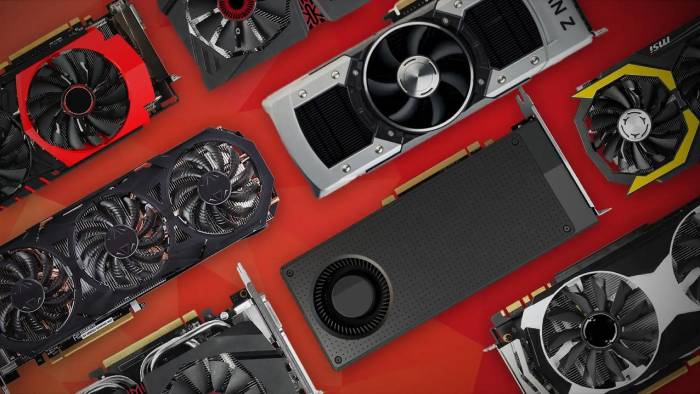What Is a Graphics Card And Desktop With Graphics Card

What Is a Graphics Card And Desktop With Graphics Card
A graphics card is a gamer’s best friend and essential to a good gaming experience. Don’t worry if you’re unsure what graphics cards do; they’re not that complicated. A graphics card, as you might expect, is the component in your computer that handles graphics.
There are various types and generations of graphics cards, each with its specifications and features. So, to break it down, we’ll take a closer look at graphics cards. In this article we will let you know more about desktop With Graphics Card
Table of Contents
GAMING
A sound graphics card is required to game and play the most recent gaming titles. Because newer games are larger and more advanced in terms of graphics capabilities, they necessitate a graphics card that can keep up. Nowadays, most games have a minimum and recommended graphics card requirement.
This means that if you try to play a demanding game but don’t have a powerful enough graphics card, you’ll be unable to do so. There are also recommended as well as minimum requirements for these ground-breaking games. The recommended system requirements aren’t required, but they will give you the best gaming experience.
You may believe recommended requirements can be ignored because they aren’t necessary. Still, if you’re serious about gaming, you’ll realise that these requirements are there for a reason and have the potential to improve your experience dramatically.
With these prerequisites come some key features that gamers could only dream of a few years ago. One of the features is ray-tracing…
RAY TRACING
Although not required for modern gaming, ray tracing is unrivalled and, without a doubt, represents the future of gaming. Ray tracing is a technology that can replicate the real-life behaviour of light rays in-game, creating an almost flawless realistic effect.
This feature provides a far superior gaming experience and enables game developers to create better and more immersive games. With such technology already available, who knows how far it could go?
This feature is provided by NVIDIA’s RTX graphics cards, a market-leading series of GPUs that also includes many other features. These modern graphics cards can continually push the boundaries of what is expected from cutting-edge graphics by utilising various features such as ray tracing.
There are virtual experiences that appear to be nearly identical to real life. However, because these experiences are much less intense, it is possible. Attempting to apply these hyper-realistic settings to an understanding as extreme as multiplayer games would be difficult but not impossible, given the rate at which graphics technology has advanced.
OTHER THAN GAMING
Although graphics cards are primarily marketed (and in some cases designed) for gaming, their capabilities go far beyond that. Those who use their computers for complex tasks such as 3D rendering, game development, and video editing will recognise the value of faster GPUs. Demanding editing software, such as Adobe Premiere Pro, uses the GPU to accelerate processing, resulting in quicker and more efficient workflows.
Workstation GPUs are optimised for these applications, and their drivers are designed to be stable and reliable when performing tasks. Professional-grade graphics cards can be compelling, but they were not explicitly designed for gaming workloads, so they should not be your first choice for a gaming PC. This emphasises that the most costly GPU isn’t always “better,” and it’s critical to choose a GPU based on how you intend to use it rather than solely on price.
If you need a graphics card to run professional applications, you should look beyond the standard consumer-level range for the best options. Although professional-grade GPUs serve a different purpose, many of the same concepts apply.
You won’t have to break the bank to get a graphics card if you’re not gaming or running demanding applications that can benefit from a GPU. Choosing the right RAM, CPU, and storage should be a higher priority if you’re primarily using productivity apps, browsing the web, managing email, and other low-resource tasks.
TYPES
You’ve probably never heard of the various types of graphics cards because the differences are rarely relevant. However, understanding what they are is critical if you want to learn everything there is to know about graphics cards.
The two types we’ll discuss here are ‘integrated’ and ‘discrete’.
An integrated graphics card is built into the motherboard and does not need to be installed separately. These are built into most standard laptops and computers; they are a low-cost model that cannot be easily upgraded.
The inability to upgrade any components – particularly the graphics card – is arguably the most significant disadvantage when selecting a laptop. As previously stated, graphics cards are improving astoundingly, so you should be extra cautious when selecting your computer because the GPU may soon become obsolete.
The other type is a discrete graphics card, which is added as an extra component to the motherboard. This is ideal for those who want to upgrade their graphics cards to customise their system. NVIDIA and AMD are known for these cards, with their RTX GeForce and Radeon series, respectively.
An integrated graphics card will suffice if you use a modern computer for routine tasks like browsing the internet, creating documents, or watching movies.
When gaming or video editing, a discrete graphics card is usually required to speed up the image processing time, without this, you may notice your game lagging or jittering at critical points, or you may find yourself unable to play the game at all because your graphics do not meet the game’s minimum requirements.
EXPANSION
Internal expansion of your PC is possible by adding new cards. Graphics expansion slots have evolved significantly over the years, from PCI (Peripheral Component Interconnect), and AGP (Accelerated Graphics Port), to PCI-E ports, which have been improved to provide the best bandwidth.
Some motherboards have expansion slots that allow users to add more than one graphics card, known as SLI (NVIDIA) or CrossfireX (AMD), allowing users to improve system performance. Users will need an SLI-ready or Crossfire-ready motherboard to use these technologies, which can connect two graphics cards.
NVIDIA created SLI, or Scalable Link Interface, to connect multiple cards in a single system. SLI works by increasing the amount of processing power available for graphics use.
OPTIONS FOR OUTPUT
Graphics cards can be connected to a monitor via various output options, but you must purchase a video card corresponding to your monitor’s port. Most GPUs will have two or three ports, with some even having four or more.
VGA (Video Graphics Array) 15pin analogue connection – The earliest connector and thus the least efficient. VGA ports are adequate, but other ports provide better video quality.
DVI (Digital Visual Interface) – Because DVI is commonly found on flat-panel monitors, it is a valuable link between a card and a screen.
HDMI – Because of its speed and versatility, HDMI is one of the most popular connections. HDMI transmits both video and audio signals.
DisplayPort –This connection is becoming increasingly popular and can be found in many modern monitors.
BUILD
The actual construction of a graphics card is something we haven’t discussed yet. How do they appear? Why are they designed in this manner? These questions have answers to the science behind how the cards work.
For example, they look the way they do (with built-in fans) because the GPU needs to be cool. Graphics cards can operate at extremely high intensities, generating enormous amounts of heat that must be dissipated before causing damage.
Unlike the CPU, which is frequently the target of additional cooling solutions such as liquid cooling systems, the GPU does not use external hardware to cool it. As a result, most modern GPUs are designed with built-in fans to allow the card to self-cool. A single card may include up to four fans for maximum cooling capacity.
The card will be design to fit snugly into a PC case. Provide plenty of space for port connections, and look the part. In the case of NVIDIA’s new RTX 30 series. The cards are much larger than most gamers anticipated and feature an ultra-modern casing. That improves the card’s performance.
EBUYER’S GRAPHICS CARDS
Why not upgrade your PC now that you know more about graphics cards?
Ebuyer has a wide range of graphics cards from reputable brands. Such as NVIDIA and AMD, each with its market-leading models… Go to our website to find out for yourself. We also have a large selection of other gaming accessories.
Also read: Benefits And Advice To Improve Your Brand
Also read: Why Can’t PS5 Play PS4 And PS3 Games?






